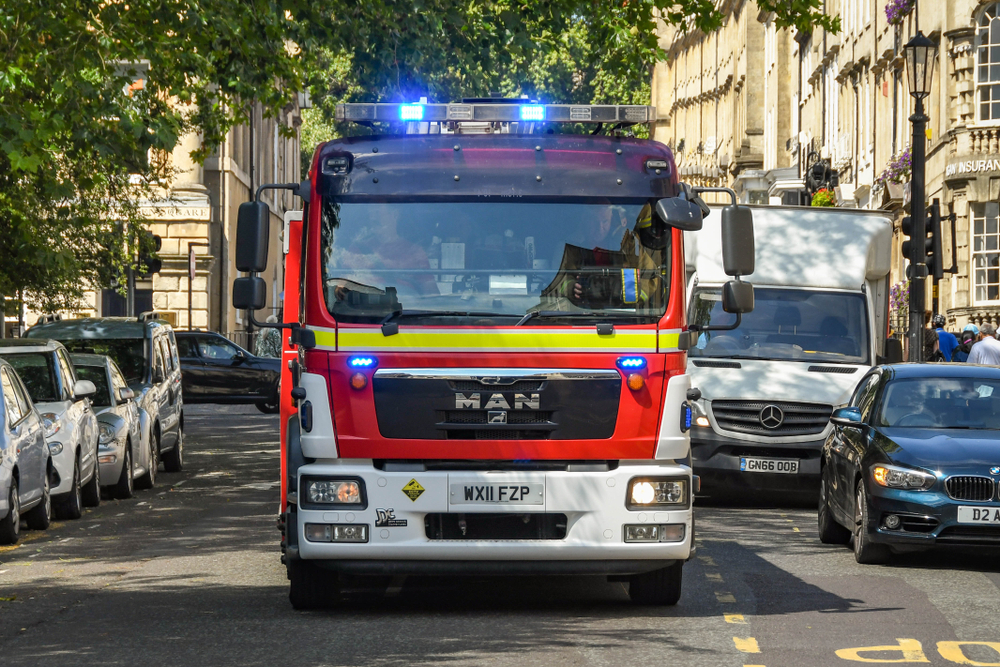Latest fire statistics show a reduction in number of incidents attended
- May 17, 2021
- 9:01 am


Iain Hoey
Share this content
The latest fire statistics from the Home Office show a five per cent reduction in the number of incidents English Fire and Rescue Services (FRSs) attended, 11 per cent fewer fire-related deaths and a three per cent fall in fires.
However, the National Fire Chiefs Council (NFCC) has voiced its concern that false fire alarms remain the largest reason for FRSs attending incidents, accounting for 42 per cent of all attended. While these have reduced by four per cent, NFCC warns this is too high and placing unnecessary pressure on resources.
Responding to the national statistics, NFCC Chair Mark Hardingham, commented: “The fall in incidents, fires and fatalities is to be welcomed. It is also testament to the hard work and dedication of FRSs and their prevention and protection work.
“While we have seen a reduction in face-to-face work in these areas due to the pandemic, this is now being scaled up. I hope will see this trend continuing, but we must acknowledge there could be short term impacts relating to this area while the country was in lockdown.
“However, any fire death is one too many and there is still work to be done to see such tragedies further reduce. One area which does need further exploration is the number of false fire alarms making up the biggest percentage of incidents. While a number of these are made in good faith, more than 5,000 were malicious.
“These calls are not only a waste of time, they show a lack of respect for firefighters. The reality is they can divert crews away from other incidents, where life could be at risk.”
The fire and rescue incident statistics, England (year ending December 2020) reports on all incidents attended and are sourced from the Home Office’s online Incident Recording System (IRS).
FRSs attended 528,601 incidents: a five per cent decrease 153,278 of these were fires. A three per cent decrease221 fire-related fatalities compared with 248 in the previous year. 64,066 primary fires, a seven per cent decrease compared with the previous year. Statistics show fires accounted for 29 per cent of all incidents, false fire alarms 42 per cent and non-fire incidents 29 per cent.
The latest fire statistics show:
| FRSs attended 528,601 incidents: a five per cent decrease |
| 153,278 of these were fires. A three per cent decrease |
| 221 fire-related fatalities compared with 248 in the previous year |
| 64,066 primary fires, a seven per cent decrease compared with the previous year |
| Statistics show fires accounted for 29 per cent of all incidents, fire false alarms 42 per cent and non-fire incidents 29 per cent |
Mr Hardingham also pointed out that while these statistics are a step in the right direction, it is essential we do not become complacent. “I want to see a fire service that is fit for the future and with the forthcoming White Paper on Fire Reform it is essential we have a well-funded, well equipped service which can meet future challenges head on.
“We saw how much additional work was undertaken during the pandemic showing the sheer scale of work FRSs are ready, willing and able to take on. Yet we face other challenges such as recruiting a diverse workforce and ensuring a resilient on-call firefighter duty system, to operational challenges as well as the day-to-day activities being undertaken. Climate change is impacting on the work all FRSs do and flooding and wildfires are becoming more commonplace which needs to be taken into account.
“The past 12 months have made NFCC’s view clearer than ever; the UK FRS must be resourced to risk as well as demand, This is to ensure we are building a resilient service ready to serve their communities and maintain the pride people have in the FRS. This is also clear from the 11 per cent increase reported in “assisting other agencies”, which covers a range of areas and is part of the duty to collaborate legislation and reflects the increasing awareness of partner organisations of the benefits the FRS can provide to them and help local communities.”
The report shows this year’s decrease was partly driven by decreases in primary fires as well as decreases in non-fire incidents and false fire alarms. It should be noted that the year ending December 2020 includes two national lockdowns and various local lockdowns which applied strict limits on daily life.
The full statistics can be found on the Home Office website.



